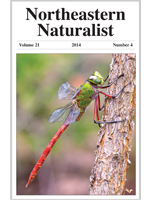Building collisions are a significant threat to birds in North America, and urban areas can be particularly hazardous to birds using city parks as stopover habitat. We examined the effects of light and glass on bird—building collisions in an urban park using New York City Audubon's collision-monitoring data from fall migration 2013 and photographic analysis of building facades. We found a significant positive relationship between the number of collisions and interior building light (rho = 1); however, the amount of light was strongly correlated with the amount of glass in building facades (r2 = 0.82). Carcass persistence at the site was examined using tagged, dead birds. Only 37 percent of carcasses were found by our monitors, suggesting that our estimate of bird mortality due to collisions has been too conservative. The amount of glass on a building facade may have an equal or greater effect on bird— building collisions than the amount of light emitted from the facade. Mitigation of both light and glass are needed to reduce bird—building collisions in urban areas.
How to translate text using browser tools
1 March 2015
Light, Glass, and Bird—Building Collisions in an Urban Park
Kaitlyn L. Parkins,
Susan B. Elbin,
Elle Barnes
ACCESS THE FULL ARTICLE

Northeastern Naturalist
Vol. 22 • No. 1
March 2015
Vol. 22 • No. 1
March 2015




